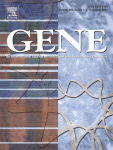
Complete mitochondrial genomes ofBaylisascaris schroederi,Baylisascaris ailuriandBaylisascaris transfugafrom giant panda, red panda and polar bear
Xie Y, Zhang Z, Wang C, Lan J, Li Y, Chen Z, Fu Y, Nie H, Yan N, Gu X, Wang S, Peng X, Yang G.
Abstract
Roundworms of the genusBaylisascarisare the most common parasitic nematodes of the intestinal tracts of wild mammals, and most of them have significant impacts in veterinary and public health.Mitochondrial(mt)genomesprovide a foundation for studying epidemiology and ecology of these parasites and therefore may be used to assist in the control of Baylisascariasis. Here, we determined thecompletesequences of mtDNAs forBaylisascarisschroederi,BaylisascarisailuriandBaylisascaristransfuga, with 14,778 bp, 14,657 bp and 14,898 bp in size, respectively. Each mtDNA encodes 12 protein-coding genes, 22 transfer RNAs and 2 ribosomal RNAs, typical for other chromadorean nematodes. The gene arrangements for the threeBaylisascarisspecies are the same as those of the Ascaridata species, but radically different from those of the Spirurida species. Phylogenetic analysis based on concatenated amino acid sequences of 12 protein-coding genes from nine nematode species indicated that the threeBaylisascarisspecies are more closely related to Ascaris suum than to the three Toxocara species (Toxocara canis,Toxocara catiandToxocara malaysiensis) andAnisakis simplex, and thatB.ailuriis more closely related toB.transfugathan toB. schroeder.The determination of thecompletemt genome sequences for these threeBaylisascarisspecies (the first members of the genusBaylisascarisever sequenced) is of importance in refining the phylogenetic relationships within the order Ascaridida, and provides new molecular data for population genetic, systematic, epidemiological and ecological studies of parasitic nematodes of socio-economic importance in wildlife.
Copyright © 2011 Elsevier B.V. All rights reserved.
Gene.2011 Aug 15;482(1-2):59-67. doi: 10.1016/j.gene.2011.05.004. Epub 2011 May 19.